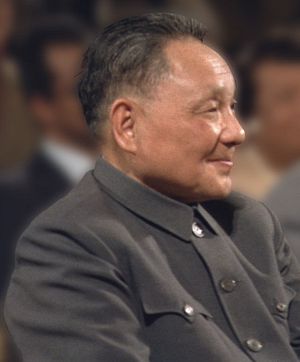The growing financial might of China has spawned numerous studies of Chinese economic statecraft, ranging from the measured to the alarmist. However, while Beijing’s use of economic tools to achieve its diplomatic ends has taken on a new character since the end of the Cold War, the PRC has long used foreign aid as a means of shoring up its geostrategic position. A new book by Shu Guang Zhang, Beijing’s Economic Statecraft during the Cold War, 1949-1991, details how Beijing used “soft” economic power for the first 40 years of the PRC’s existence to both resolve core problems with the domestic economy, and to expand the China’s international influence.
Chinese policymakers needed to balance a very difficult pair of problems; China was deeply impoverished, yet it wished to have international influence commensurate with its size and historic (both Chinese and Communist) missions. And we know that the PRC undertook extensive diplomatic efforts, both before and after the Sino-Soviet Split, to carve out a space (and in some cases, to simply carve up) international society. Adding to the challenge, China’s leaders had little formal understanding of how the international economy functioned.
The superpowers presented both problems and opportunities. From the start, U.S. trade policy in the early Cold War starkly limited China’s strategic choices. The development of the Coordinating Committee to Control East West Trade, or CoCom, sharply limited the ability of U.S., European, and Japanese firms to export technology to Russia or China. This cut the PRC off from one of a developing country’s most important technological conduits, and forced Beijing to rely even more upon Moscow. The much more onerous sanctions that the U.S. imposed during the Korean War restricted China to an even greater degree. On the other side, new work on China’s relationship with the Soviet Union has also demonstrated the complexity of that relationship for the economies of both countries. China sought to avoid dependence on Moscow, and eventually had the weather the USSR’s prolonged anger.
The PRC worked hard to acquire foreign technology from what sources it could, including low-level barter with Japan, sketchy arrangements with authorities in British controlled Hong Kong, and limited trade with the developing world. And China’s vulnerability to the whims of the superpowers helped characterize its economic policy towards the less developed (“intermediate”) world; the PRC generally eschewed the use of strict political conditions on foreign aid and bilateral trade. Whether Beijing’s foreign economic statecraft had much of an effect in making the nation more secure is an entirely different question; limited Chinese means, compared to the USSR or the US, often meant that target countries had little incentive to alter policy in Beijing’s favor.
The rapprochement with the United States in 1972, combined with major reforms to the Chinese economy in the 1980s, helped to resolve many of the core problems by improving access to technology and increasing China’s overall prosperity. Nevertheless, some echoes of Cold War economic statecraft remain, primarily in the “no strings attached” approach to foreign assistance. Beijing has always understood the interconnected nature of foreign and economic policy, even if it has sometimes struggled to effectively intertwine the two.
































